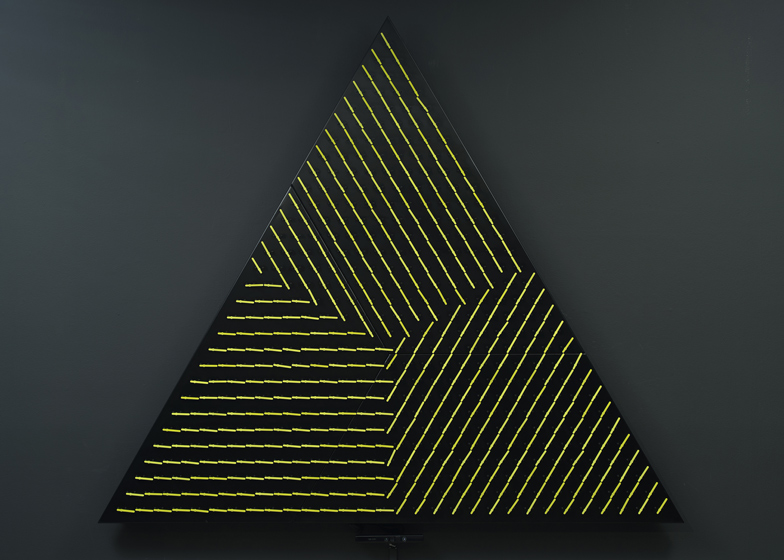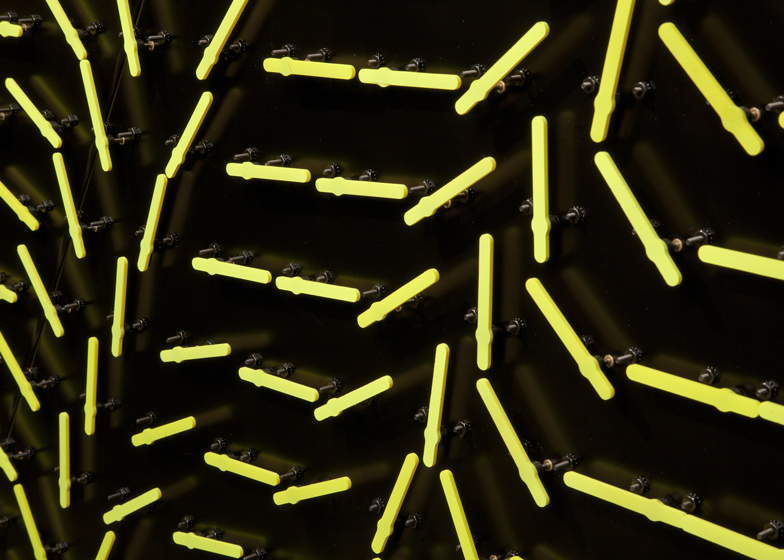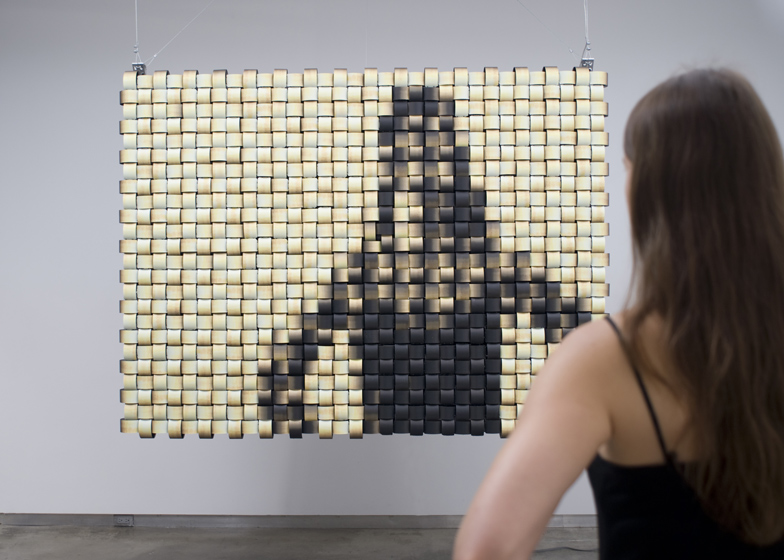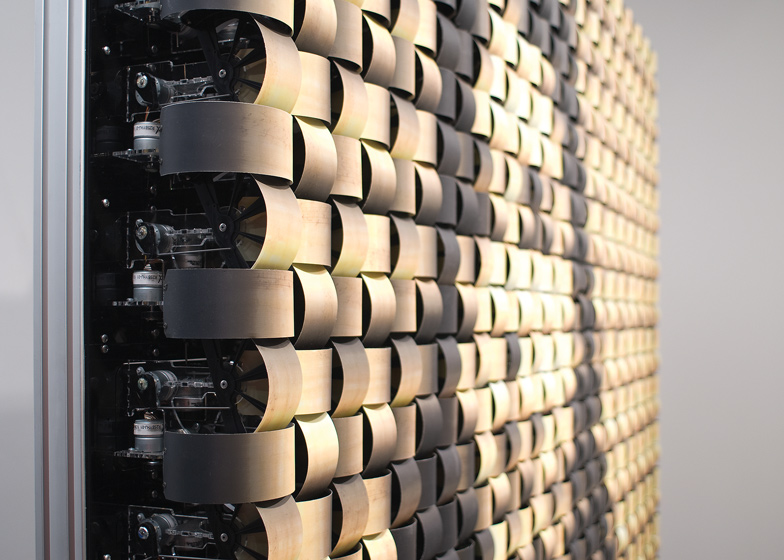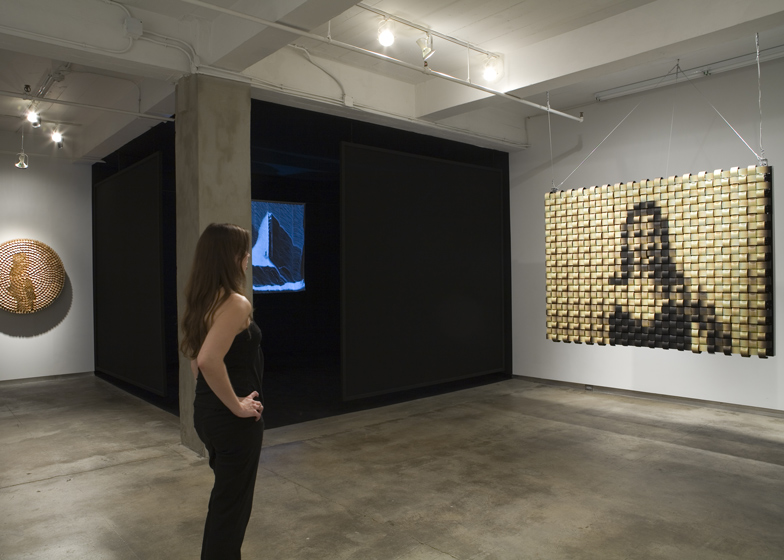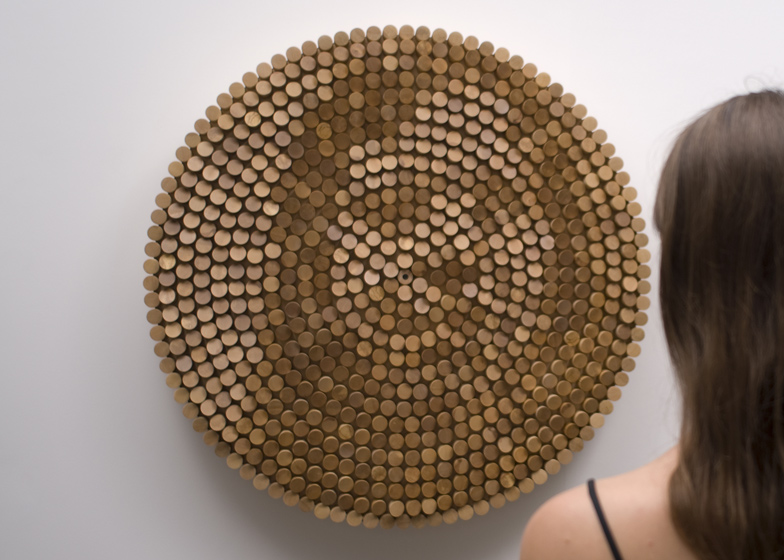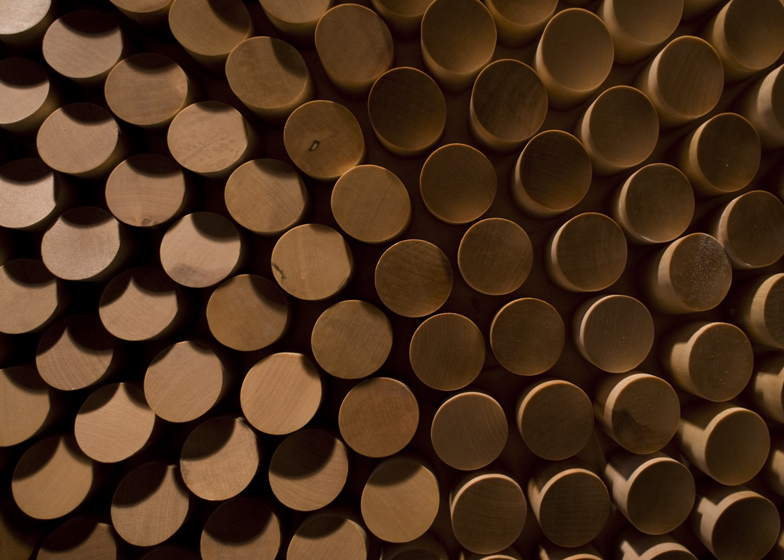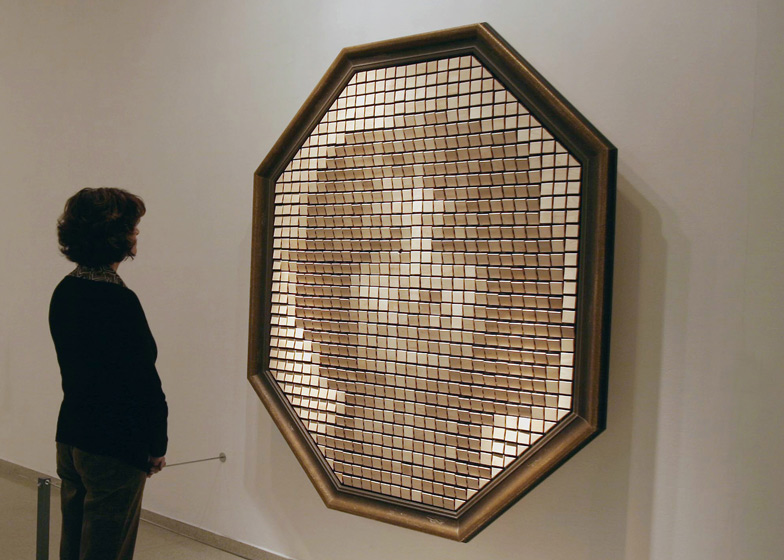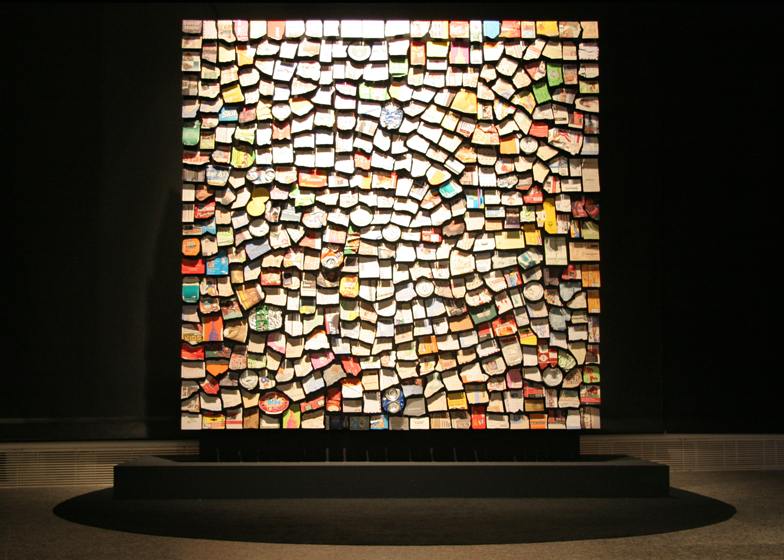These interactive installations by artist Daniel Rozin use sensors and motors to rearrange objects into a mirror-image of whoever stands in front of them (+ slideshow).
In his Mechanical Mirrors, Rozin connects motors to items including wooden pegs, plastic spokes and pieces of rubbish, then assembles them on large picture frames.
Behind each image is a hidden camera that feeds what it sees in real-time to a computer, which converts the image into an 830-byte video signal. Software designed by Rozin then instructs each motor to move the panel it controls accordingly to make up the image. The result is a mirror-image of the person or object in front of the panel.
"The mechanical mirrors are made of various materials but share the same behaviour and interaction," explained Rozin. "Any person standing in front of one of these pieces is instantly reflected on its surface."
His most recent installation, the Angles Mirror, used 465 plastic spokes arranged in a triangle-shaped steel frame to achieve this effect.
With his Weave Mirror, Rozin used 768 motorised and laminated C-shaped prints to mimic the look and feel of a homespun basket.
For his Trash Mirror meanwhile, he assembled 500 pieces of variously coloured bits of rubbish collected from the streets of New York and the artist's pockets.
"This piece suggests that we are reflected in what we discard," said Rozin. "The piece celebrates the ability of computation to inflict order on even the messiest of substances - trash."
Rozin's first mirror used 830 square pieces of wood. He continued to experiment with the material, most notably in 2007, where he used 650 wooden pegs, cutting each one at an angle to create the illusion of pixels.
"The silently moving wood components in this piece flicker like jewels or coins in the spotlight, challenging our notions about what constitutes a 'digital object'," he said.
Rozin has been commissioned to build an installation using this technology at the Taiwan Taoyuan international airport later this year. Rozin's work will also be on display at the Barbican in London this summer as part of the gallery’s Digital Revolution exhibition.


